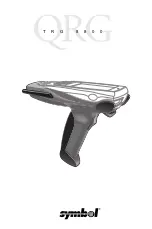
77
MPS4264
Section 6: Maintenance
Calibration Coefficient Installation
(Windows XP, 7, 10)
NOTE: Some firewalls may block file transfers. We recom-
mend that firewalls be shut down for the procedures in this
section.
1. Connect a host computer to the Ethernet port.
2. Open My Computer
3. In the Address Bar, type:
ftp://<IPAddress><Enter>
Where: <IPAddress> is the IP Address of the MPS4264.
4. The host computer should connect. If the connec-
tion is successful, the contents of the MPS4264 flash
storage will be displayed in a folder format.
Figure 6-4: Flash File Contents
5. Open Windows Explorer in another window. Find the
directory where the new calibration coefficients are
stored. MPS4264 calibration coefficients are a text file
called “CAL.CFG” Highlight the files to be copied to the
MPS4264 and
Click:
Edit
Click:
Copy
6. Select the MPS4264 window and,
Click:
Edit
Click:
Paste
The files will be copied to the MPS4264, replacing any
existing CAL.CFG file that may have existed. A progress
window will provide progress information.
7. When the copy function is complete, the MPS4264
window will show the new files. The time and date of
the new file can be used to confirm that the new files
were uploaded successfully.
8. Cycle the AC power or execute a Reboot command to
complete the process.
DIP Switches & Bootloader Mode
DIP Switches
The MPS4264 has two DIP switches on the Power/Ethernet
board. The configuration of the first DIP switch enables or
disables detailed debug output from the unit. The configu-
ration of the second DIP switch determines the module’s
function regarding when the module boots into the “appli-
cation” file and when it is held in “bootloader” mode. The
two switches are:
SW1 - When this switch is on, the boot loader will run in
the debug mode. Debug output is directed to the serial
port. Default is off.
SW2 - When this switch is on, the application automati-
cally boots on power up. When this switch is off, the
MPS4264 remains in the bootloader mode. Default is
on.
*NOTE: The “ON” and “OFF” positions are the opposite of
the “ON” label on the switches. Figure 6-6 shows the DIP
switches with the “correct” position labels.
When to operate in bootloader mode
If the MPS will not boot, or appears to have lost commu-
nications with a Host, the system may be operated in the
Bootloader Mode. This is a “safe mode” of sorts where the
MPS stays in the “boot loader.” In this mode of operation,
the application will not start. All available commands may
be entered by the Ethernet or Configuration ports. Typi-
cally, the only common reason to use this function is if the
application file has been corrupted and the MPS is failing to
boot from it correctly.
How to operate in bootloader mode
1. Power the MPS down and disconnect the power
and Ethernet cable. Ensure proper ESD consider-
ations are taken.
CAUTION! ESD PROTECTION
REQUIRED. The proper use
of grounded work surfaces
and personal wrist straps are
required when coming into
contact with exposed circuits to
prevent static discharge from
damaging sensitive electronic
components.
2. Remove the two screws that mount the end cover
in place. Carefully remove the end cover by sliding
it vertically up. Care must be taken to not bend or
move the power or Ethernet connector.
Summary of Contents for MPS4264
Page 1: ...MPS4264 Miniature Pressure Scanner Hardware and Software Manual Software Version 2 07...
Page 2: ......
Page 3: ......
Page 6: ...INTENTIONALLY LEFT BLANK...
Page 12: ...6 MPS4264 Section 1 Specifications INTENTIONALLY LEFT BLANK...
Page 18: ...12 MPS4264 Section 2 Introduction INTENTIONALLY LEFT BLANK...
Page 32: ...26 MPS4264 Section 4 Hardware INTENTIONALLY LEFT BLANK...
Page 38: ...32 MPS4264 Section 5 Software INTENTIONALLY LEFT BLANK...
Page 81: ...75 MPS4264 Section 6 Maintenance INTENTIONALLY LEFT BLANK...
Page 86: ...80 MPS4264 Section 6 Maintenance INTENTIONALLY LEFT BLANK...
Page 87: ...81 MPS4264 Appendix INTENTIONALLY LEFT BLANK...
















































